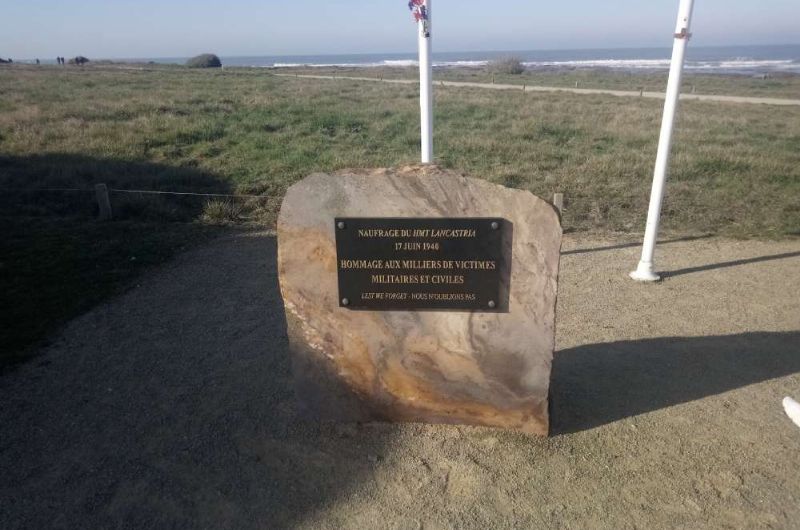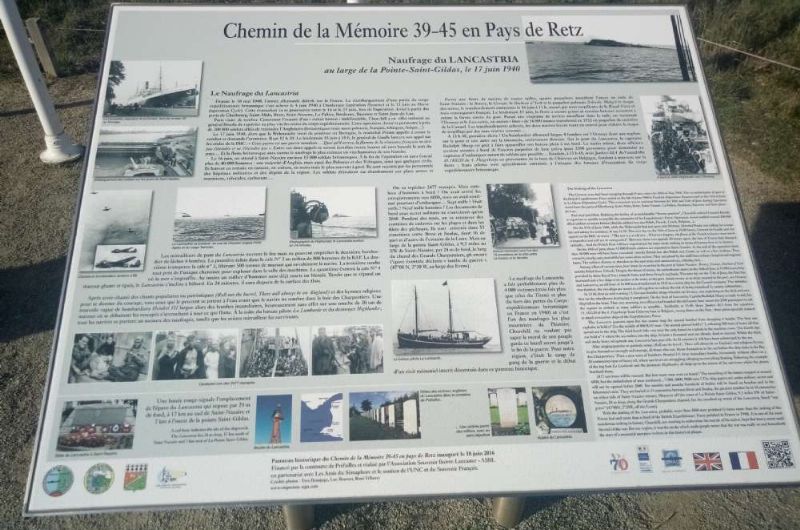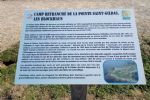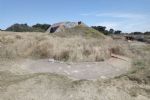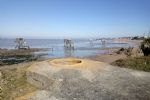Lancastria shipwreck stele
- 22
- See on map
Panel text
Chemin de la Mémoire 39-45 en Pays de Retz
Sinking of the LANCASTRIAoff Pointe-Saint-Gildas, June 17, 1940
Since May 10, 1940, the German army has been sweeping across France. The re-embarkation of part of the British Expeditionary Force was completed on June 4, 1940 at Dunkirk(operation Dynamo) and on June 13 at Havre (operation Cycle). This evacuation will continue between June 16 and k 25, during Operation Aerial from the ports of Cherbourg, Saint-Malo, Brest, Saint-Nazaire, La Pallice, Bordeaux, Bayonne and Saint-Jean-de-Luz.
Paris had just fallen Noting the futility of an indefensible Breton reduction, Churchill had in fact ordered General Brooks to repatriate the remains of the expeditionary force as quickly as possible. This operation Aerial will enable almost 200,000 Allied soldiers to reach England (British, but also Polish, French, Czech, Belgian...)
On June 17, 1940, just as the Wehrmacht has entered Brittany, Marshal Pétain calls a halt to the fighting and asks for an armistice. The time is 12:30 p.m. The following day, June 18, at 6 p.m., General de Gaulle makes his appeal over the airwaves of BBC"This war is a world war.... Whatever happens, the flame of French resistance must not and will not be extinguished." Thirty hours will have passed between these two calls, and the fate of the country will have been decided... And the British fleet will have suffered the most costly sinking in human lives in its history.
On June 16, some 15,000 British soldiers are expected at Saint-Nazaire. By the end of the operation, over 40,000 men will have been evacuated, the majority of them British, but also Poles and Czechs, as well as a few civilians. They retreated by truck, car or motorcycle, but mostly on foot. They were joined by personnel from the region's military hospitals and depots. The soldiers destroy or abandon weapons and ammunition, vehicles and fuel on the spot....
Among a fleet of ships of all sizes, four liners dropped anchor in Saint-Nazaire harbor: the Botary,Georgia, Duchess of York and the Polish liner Sobieski. Despite the risk of mines, transshipment began at 11 a.m. on June 16, carried out by three torpedo boats from the Royal Navy and three French tugs. By the following day, June 17, the fleet had grown even larger, and some boats even docked at the harbor's entrance form.
Among a score of ships anchored in the roadstead, we recognize the Oronsay and the Lancastria, a former 16,000-ton "liner" transformed in 1932 into a Cunard cruise liner. Transshipments completed, the two ships will sail in convoy to reduce the risk of torpedoing by enemy submarines...
At 1:48 pm, first alert! A German bomber drops 4 bombs , on the Oronsayone of which explodes on the deck and another on the wheelhouse, completely destroyed. On the deck of the Lancastria, Captain Rudolph Sharp is ready to set sail with his ship full to the brim. That very morning, two officers reportedly climbed aboard the former luxury liner designed for 2,500 people to ask the captain to take on board as many soldiers as possible.... Suddenly, at 3:48 p.m., three junkers 88A of squadron 11./KG30 of the 4. Fliegerkorps coming from the Chièvres base in Belgium, swoop down on the fleet again; their pilots are specially trained to attack the evacuation boats of the British expeditionary corps.
The deck gunners of the Lancastria open fire but cannot prevent the second bomber from dropping 4 bombs. The first bursts in hold N° 2 amidst 800 RAF men. The second pierces hold no. 3, releasing 500 tons of fuel oil which floods the ship. The third falls close to the only chimney, exploding in the engine room. The fourth rips open hold no. 4 and the sea rushes in. At least a thousand men are already dead or wounded. The Lancastria tilts to port as thick, sticky fuel oil spreads. In 24 minutes, she will have disappeared from the surface of the waves.
After singing popular or patriotic songs (Roll out the barre!,There roill ahvays 6e an England) and religious hymns to give themselves courage, all those who can throw themselves into the water before the ship sinks into Carpenters Bay. A new wave of Heinkel III bombers then drops incendiary bombs, fortunately having no effect on a 20 cm layer of fuel oil where survivors struggle, clinging to whatever floats. Following the pilot boat La Lambarde and the destroyer Highlander, all ships went to the aid of the shipwrecked, while aircraft strafed the survivors. 2477 survivors are rescued. But how many men were on board? The registrations had been stopped at around 6000, but people had continued to embark... Seven thousand? Eight thousand? Nine thousand men? The military-secret on-board documents won't be opened until 2040. For months, hundreds of corpses were found on beaches and in fishermen's nets. They are buried in 53 cemeteries between Brest and Soulac, including 16 on either side of the Loire estuary. But off the pointe Saint-Gildas, 9.5 miles SW of Saint-Nazaire, in 24 m of water, along the Grands Charpentiers channel, still lies the gutted wreck declared a war grave t. (47°08 N, 2°20 W, off Les Evens).

